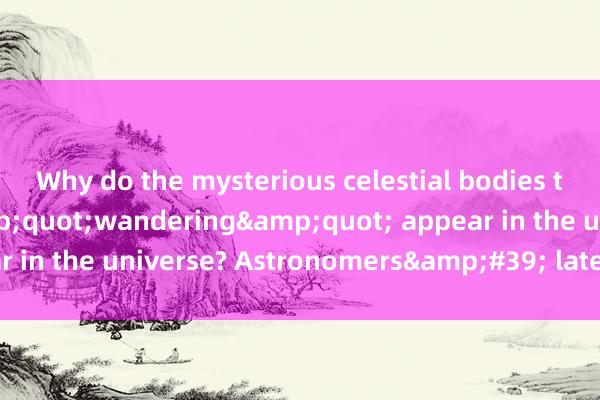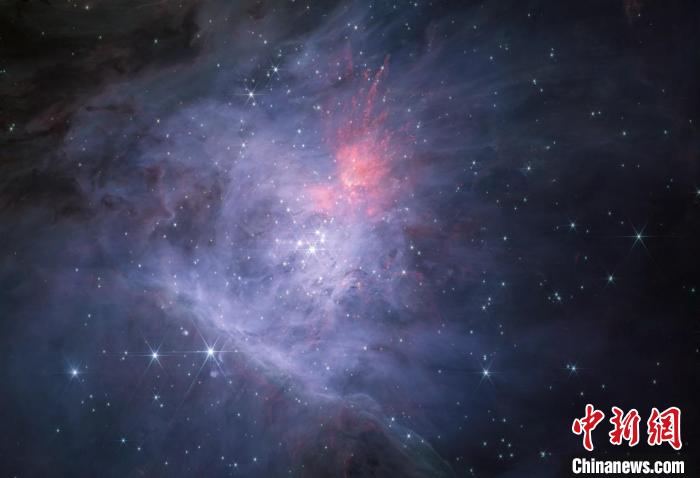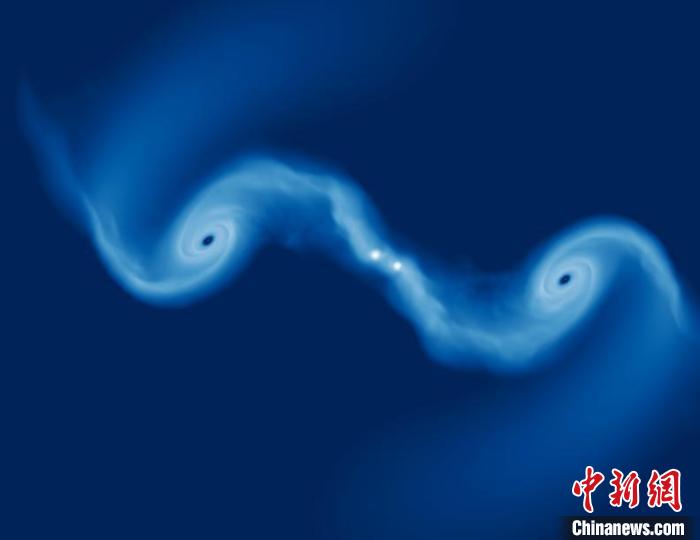Why do the mysterious celestial bodies that &ldquo "wandering" appear in the universe? Astronomers' latest answers
发布日期:2025-03-16 12:45 点击次数:61

China News Service, Beijing, February 27 (Reporters Sun Zifa and Zheng Yingying) In the astronomy community, there is a mysterious celestial body that was first detected in 2000 and has a sharp increase in observation samples in the past five years - Planetary Mass objects (PMOs). The question of how it formed has attracted much attention.
The international cooperative scientific research team led by Researcher Deng Hongping of the Shanghai Observatory of the Chinese Academy of Sciences has discovered a new mechanism for forming a mass of a wandering planet. They believe that a wandering planet mass celestial body with a mass between a star and a planet is neither a product of the traditional star formation process nor a giant planet being expelled, but is directly formed through the tidal interaction of the peri-star disk of young stars.
This astronomical study, which is of great significance to understanding the impact of star clusters on planet formation and exploring the boundaries of star formation and planet formation, was jointly completed by the Shanghai Observatory of the Chinese Academy of Sciences, together with partners from the University of Hong Kong, University of California, Santa Cruz, and the University of Zurich, Switzerland and other Chinese and foreign research institutions. The relevant results paper was published in the international academic journal Science Advances in the early morning of February 27, Beijing time.
The two existing theories cannot be explained
Researcher Deng Hongping introduced that the mass of a wandering planet mass is usually lower than the deuterium combustion limit (about 13 times the mass of Jupiter), close to a giant planet, but not bound by any stars. The James Webb Space Telescope (JWST) in the United States has observed and confirmed that this mysterious celestial object is widely present in young star clusters.

James Webb Space Telescope imaging near infrared bands in the Orion nebula. (Image source: NASA,ESA, CSA/M.McCaughrean, S.Pearson)
Over the past 20 years, astronomers have believed that wandering planet mass objects may be extremely low-mass stars formed by the collapse of molecular clouds, or giant planets ejected from the parent star system. However, neither theories can explain the abundance of wandering planet mass objects, the diversity of multi-body systems (such as binary or triple stars), and the consistency with the stellar motion characteristics. For example, in the "Trapezium" cluster in the Orion Nebula, the number of wandering planet mass objects far exceeds the prediction of traditional stellar mass functions, and about 9% of wandering planet mass objects exist in the form of a multi-body system, which is completely different from the characteristics of extremely low-mass star systems.
On the other hand, there are extended gas disks around many wandering planet mass bodies, with a radius of up to 100 times the daily and earth distance (astronomical units, AU). This indicates that the mass of a wandering planet and a star are formed at the same time before the nebula gas is dissipated and has not been bound by the stars. Otherwise, the size of the gas disk of a wandering planet mass will be severely limited by the gravity of the star. Therefore, the mass of a wandering planet is not a giant planet ejected by the main star.
The "tidal bridge" encounters with the circumferential disk
Deng Hongping pointed out that wandering planet mass celestial bodies are difficult to be explained by existing theories of star or planet formation, which prompted the research team to propose a new theory of early circumferential disk interaction to form wandering planet mass celestial bodies. Through high-precision fluid dynamics simulations, they found that when the peristar disks of two young stars meet at close range at specific angles and velocities, the tidal force stretches and forms a slender "tidal bridge." Under the action of gravity, these bridge-like structures further shrink into dense linear molecular clouds, eventually breaking and collapse into independent wandering planet mass objects.
experimental simulations show that this process is extremely efficient in dense star clusters (such as "Four-Shaped Stars" clusters). When the circumferential disk passes by at a speed of 2-3 kilometers per second and a distance of 300-400 astronomical units, the line density of the "tidal bridge" exceeds the critical value of stability, and multiple wandering planet mass objects can be generated at the same time, and even a tight binary or triple-star system can be formed. Example of a three-dimensional fluid mechanics simulation of a "tidal bridge" forming between the circumferential disks of encountering stars and collapsing to form a binary of stray planet mass. Photo provided by Shanghai Observatory of Chinese Academy of Sciences
In the dense "Four-Shaped Star" cluster, stars encounter frequently, and the velocity of stars disperses exactly between 2-3 kilometers per second, thus forming the "cradle" of wandering planet mass celestial bodies, giving birth to the largest group of wandering planet mass celestial bodies observed so far. And the mass of a wandering planet in the IC348 cluster where the stars are moving at a very small speed is dispersed. In addition, these formed stray planet mass celestial bodies also retain an extended gas disk, which is also highly consistent with the observation results, further verifying the reliability of the theory of tidal interactions in the perimeter disk proposed in this study to directly form stray planet mass celestial bodies.
may represent a new type of celestial bodies. The research team believes that this study proposes a new mechanism for forming wandering planet mass celestial bodies, which not only explains the abundance and properties of wandering planet mass celestial bodies, but also implies that they may represent a new type of celestial bodies, thus providing new ideas for understanding the formation mechanism of wandering planets in the universe.

The encounter planets pull out a three-dimensional simulation of pairs of wandering planets (Credit: Deng Hongping). Shanghai Observatory of Chinese Academy of Sciences Photo provided by
"Randing planet mass celestial bodies may constitute a type of celestial bodies in the universe that are neither stars nor planets, and will help us understand the boundaries between star formation and planet formation." Deng Hongping said.
At present, observation samples of celestial bodies of wandering planets are growing rapidly. The research team revealed that the extraterrestrial Earth survey project led by the Shanghai Observatory of the Chinese Academy of Sciences can efficiently search for wandering planets through microgravity lensing. The study on the incidence and properties of mass celestial bodies of wandering planets in different star clusters will further reveal the universality of the new mechanisms they discovered in the universe.